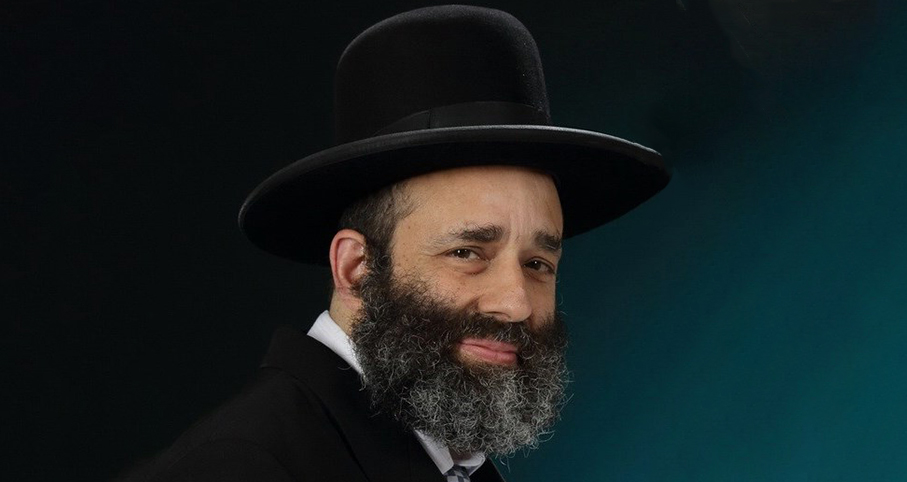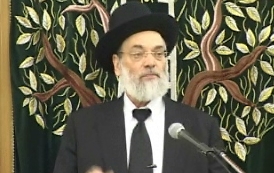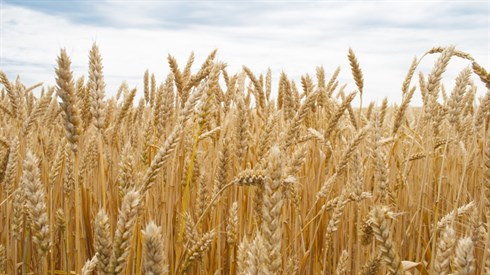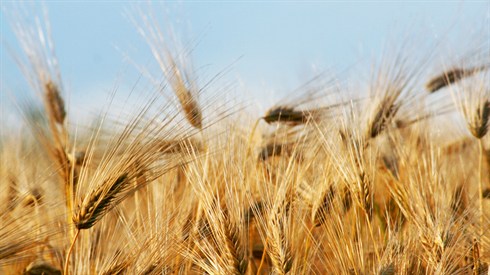173
"Is there an obligation to bring bikkurim from the Golan?"
Question #2: What?
"Must I separate bikkurim from my lemon tree?"
Question #3: When?
"I know people separate terumah and maasros and keep shevi’is, but why do I never hear about anyone separating bikkurim?"
Introduction
The opening words of parshas Ki Savo describe the mitzvah of bikkurim. Although most of us are familiar with some of the basics of this beautiful mitzvah, many are unaware of a lot of its details. Since we pray three times a day that Hashem rebuild the Beis Hamikdash where we will again be able to fulfill this mitzvah, we should be fully prepared and know all about the observance of bikkurim. In addition, we want to comprehend the parsha thoroughly, fulfill the mitzvah of Talmud Torah by understanding this mitzvah, and grow from internalizing the hashkafos associated with it. So, our task for today’s article is clearly defined.
According to the Rambam and the Sefer Hachinuch, there are actually three different mitzvos involved in performing bikkurim. The first is the mitzvah of separating the bikkurim and bringing them to the Beis Hamikdash. The second is reciting parshas bikkurim, the special reading that the Torah records at the beginning of parshas Ki Savo, and the third is a lo saaseh, a negative commandment, that the kohein may not eat bikkurim outside Yerushalayim. In the course of this article, we will discuss some of the details of all three of these mitzvos.
Here are the basics: When the first produce of the seven fruits -- wheat, barley, grapes, figs, pomegranates, olives and dates -- begins ripening, the owner/farmer marks the ripening fruit. (I know that someone is going to criticize my calling wheat and barley "fruits," since you will not find them in the produce department of your local supermarket. However, if you check your dictionary, you will see that wheat and barley kernels are indeed "fruits." This explains why the Mishnah frequently refers to them as peiros.) This applies only if the farmer is working his inherited land in Eretz Yisroel, the land that his ancestors received when the land was divided among the tribes under the rule of Yehoshua.
Marking the bikkurim
The Mishnah describes how the farmer ties a ribbon or other marker around the first blossoming fruits, so that he can later ascertain which ones are his bikkurim. When the farmer marks these young, immature fruits, he declares them to be bikkurim. This declaration creates the fruit’s sanctity, its kedusha, and we will soon explain the ramifications of this kedusha. Rather than tie a ribbon around the bikkurim, the farmer may mark them in a different way, if he prefers (Peirush Hamishnayos of Rambam) -- tying something to it is merely a suggestion, so that he will know which fruit he declared as bikkurim.
On to Yerushalayim!!
When the bikkurim complete ripening, the farmer places them in a basket, and, as the Torah states, he takes them to "the Place where Hashem chose to associate His Name." Until the building of the Beis Hamikdash, the farmer brought the fruits to the Mishkan. Afterwards, he brought them to the Beis Hamikdash, as our farmers will again do when the Moshiach comes. As we will soon see, to execute this mitzvah fully, the farmer must be completely tahor, something that, unfortunately, we cannot achieve today, until we again have ashes of the parah adumah available.
The Mishnah describes the bringing of the bikkurim as a very elaborate procession, beginning at the farmer’s home village and continuing all the way to the Beis Hamikdash. "How did they bring the bikkurim? All the towns that were part of the same ma’amad (a type of district) would gather to the capital of the ma’amad."
What is the ma’amad? In the Beis Hamikdash, there were regular shifts, not only of kohanim to perform the service, and Levi’im to serve as honor guards and doormen and to sing while the korbanos were offered, but also shifts of Yisroelim, who were called the men of the ma’amad, whose job was to pray on behalf of the rest of the Jewish people while the korbanos were being offered.
The Mishnah (Bikkurim 3:2) describes the pilgrims gathering together in the capital city of their ma’amad so that they would collectively bring their bikkurim together. During their trip to Yerushalayim, they did not enter anyone’s house, to make sure that they not become tamei, which would adversely affect their plans to bring the bikkurim. To quote the Mishnah, "They would sleep in the city street, and not enter any house. Early the next morning, the appointed head would announce: ‘Rise, and let us head towards Tziyon, to the House of Hashem, our G-d!’" paraphrasing a posuk in Yirmiyohu (31:5). For their entire journey to Yerushalayim, which might take weeks, the pilgrims bringing the bikkurim would sleep in the streets or parks of the towns they visited along the way.
The Mishnah continues: "Those people who brought their bikkurim from nearby brought fresh figs and grapes, whereas those who lived at a distance..." processed these two species into dried figs and raisins and brought them as bikkurim that way. Otherwise, by the time they arrived the fruit would not look nice, which would diminish the beauty of the mitzvah. For a similar reason, the Mishnah (Bikkurim 1:3) reports that bikkurim were not brought from areas in which the fruit is inferior, such as from date trees that grow in the mountains or inferior olive orchards.
The procession continues…
"An ox led the way, its horns overlaid with gold and a diadem of olive branches on its head, with a flutist playing ahead of the pilgrims’ procession." This parade continued until they neared Yerushalayim. When the procession reached the outskirts of Yerushalayim, they halted temporarily, and the flute stopped playing (Mishnah Rishonah). The pilgrims sent a message ahead of them that they were about to arrive, and then decorated their bikkurim. Once the message of the pilgrims’ imminent arrival was received in the Beis Hamikdash, the officers, associates and treasurers of the Beis Hamikdash went out to greet them, at which time, the procession, with the flutist leading the way, continued towards the Holy City. When they entered the city of Yerushalayim, all the craftsmen working in the city would stand up for them as the Bikkurim-laden pilgrims passed through the city, and greet them: "Our brothers, from such-and-such a place, Come in Peace!" (Bikkurim 3:3).
"The flute continued to play until they reached the Har Habayis (the Temple Mount). When they reached the Har Habayis, even King Agrippas (should he have been one of the pilgrims, and certainly everyone else) placed his basket on his own shoulder and continued walking until they reached the Azarah, the courtyard of the Beis Hamikdash. When they reached the Azarah, the Levi’im began singing the words of Tehillim 30:2, Aromimcha Hashem, I praise you Hashem…" (Bikkurim 3:4).
Upon bringing the bikkurim to the Beis Hamikdash, the farmer makes a lengthy declaration, which is stated verbatim in the Torah. The recital of this declaration fulfills a separate mitzvah of the Torah, and is one of the ritual recitations that must be stated in the original Hebrew words of the Torah, as ruled by the Mishnah (Sotah 32a).
We are very familiar with the declaration of the pilgrim bringing his bikkurim, since the Sifrei on it forms the basic structure of our haggadah on Pesach, as required by the Mishnah. At the seder, after the son asks the four questions, "the father exposits from the words, Arami oveid avi, an Aramean wanted to destroy my father, until he completes explaining midrashically the entire passage" (Mishnah, Pesachim 116a).
The kohein and the owner perform some acts of avodah with the bikkurim in the Beis Hamikdash. After these are performed, the bikkurim are divided among the kohanim who are on duty that day.
Bikkurim have the halachic status of terumah
Because the Torah, in parshas Re’eih (Devorim 12:17), refers to bikkurim as terumas yadecha, the terumah in your hand, they have the same halachic status as terumah (Bikkurim 2:1). Like terumah, bikkurim are the property of the kohein. They are given to him as one of the 24 gifts of the kohanim, called matanos kehunah, that the Torah awards him for this service in the Beis Hamikdash and to the Jewish people. It should be noted that the primary purpose of these 24 gifts seems more for the Yisroel who is donating than for the kohein. It requires the Yisroel to have a regular, ongoing relationship with kohanim, which thereby helps to foster a rebbe-talmid relationship between a farmer, wherever he lives and works, and someone who can be totally committed to learning and teaching Torah.
Terumah and bikkurim may not be eaten by anyone except a kohein and his immediate family, that is, his wife and children, with the exception of his daughters who have married non-kohanim who may no longer eat them. In addition, bikkurim and terumah may also be eaten by the non-Jewish slaves of a kohein who have the halachic status of eved Cana’ani, which means that they accepted upon themselves that they will observe most mitzvos of the Torah and immersed in a mikveh to achieve the sanctity that this status entails.
Prior to eating terumah or bikkurim, the kohein recites a brocha, Boruch Atta Hashem Elokeinu Melech ha’olam, asher kideshanu bikedushaso shel Aharon, vetzivanu al achilas terumah. (Some have the text vetzivanu le’echol terumah.) Blessed are You Hashem, our G-d, King of the Universe, Who sanctified us with holiness of Aharon and commanded us concerning the eating of terumah (see Rambam, Hilchos Bikkurim, 1:2). The beginning of this brocha sounds somewhat familiar to us because it is identical to the beginning of the brocha that the kohanim recite prior to duchening. Unfortunately, duchening is the only mitzvah that a kohein performs today in his special role. (The mitzvah of pidyon haben is not performed by the kohein, but by the father.) However, when we are again tahor and the Beis Hamikdash is rebuilt, this style of brocha will again be recited frequently, since brochos that begin with asher kideshanu bikedushaso shel Aharon will be recited by kohanim prior to eating terumah, bikkurim and korbanos. According to some authorities, these brochos are also recited prior to a kohein donning the bigdei kehunah, the special vestments that he wears when performing the service in the Beis Hamikdash (Artzos Hachayim, Eretz Yehudah 18:1, page 81b).
There is a dispute among halachic authorities whether a kohein’s wife recites this brocha before she eats terumah or bikkurim. The Mishnah Rishonah (Terumos 8:1) and others rule that she recites the brocha (Kovetz He’aros #47; Imrei Moshe 13:3), the Yeshuos Malko (Hilchos Bikkurim 1:2) is inclined that she does not, and the Derech Emunah (Terumos 15:145, 7:18 Biur Hahalacha, Bikkurim 1:8; see also Tzelach, beginning of Brochos) rules definitely that she does not, unless she herself is the daughter of a kohein.
Inedible bikkurim
Bikkurim share with several other agricultural mitzvah products -- including terumah, shevi’is, and maaser sheini -- many halachos concerning how they may be eaten and that it is forbidden to ruin them. Nevertheless, should they become inedible, they lose their special sanctity. For this reason, there is no halachic problem with using hair shampoo that includes oats or wheat germ that were originally terumah, shevi’is, or maaser sheini, since the mixing of the other ingredients makes them unappealing to the human palate, notwithstanding that it is prohibited to use terumah, shevi’is, or maaser sheini as an ingredient in shampoo.
More than terumah
Bikkurim actually have greater sanctity than does terumah, since terumah may be eaten anywhere, whereas bikkurim, similar to korbanos, may be eaten only within the walls of the halachic old city of Yerushalayim (Rambam, Hilchos Bikkurim 1:3, based on Tosefta, Challah 2:8). (The current walls of Yerushalayim have little to do with where the halachic old city was, but include areas that are outside the halachic old city and exclude areas that are halachically considered to be inside Yerushalayim for purposes of korbanos and bikkurim, such as the area today called Silwan or Ir David.)
Bikkurim are more stringent than terumah in that an onein, someone who has just lost a close relative, is not permitted to eat bikkurim, although he may eat terumah (Bikkurim 2:2).
Like terumah, bikkurim may be eaten only when the person eating them is completely tahor. If the bikkurim become tamei by contact with someone or something that is tamei, they are invalidated, just like terumah, and may not be eaten. If bikkurim or terumah become tamei min haTorah, they must be burnt, and not destroyed or disposed of in a different way. After they are burnt, there is no remaining sanctity to the ashes, and they can be used for fertilizer or any other purpose (Mishnah Temurah 33b).
Bikkurim leniencies
There are several leniencies that apply to bikkurim. For example, the responsibility of separating bikkurim rests only when the farmer owns the land, but not to a sharecropper, tenant, or squatter (Bikkurim 2:3).
If the farmer/owner fails to separate or declare product as bikkurim, the crop remains perfectly kosher for anyone to consume, including its first fruits. This halacha is quite different from terumah, in which the crop may not be eaten until terumos and maasros have been separated.
As mentioned above, bikkurim applies only to the seven fruits for which Eretz Yisroel is praised, unlike terumos and maasros, which apply to all produce grown in Eretz Yisroel.
The requirement to separate bikkurim applies only to the land that was promised to Avraham Avinu, and does not apply min haTorah to the part of Eretz Yisroel east of the Jordan River, nor to the area called Syria that Dovid Hamelech conquered (Rambam, Hilchos Bikkurim 2:1). Miderabbanan it was applied to these two areas, but Chazal did not extend the mitzvah to the areas outside Eretz Yisroel. This is different from the mitzvos of terumos and maasros, which apply miderabbanan not only to all these areas but also to the border countries near Eretz Yisroel, such as Egypt, Amon and Moav (Rambam, Hilchos Terumos 1:1).
Thus, at this point, we can answer our opening question: "Is there an obligation to bring bikkurim from the Golan?"
The answer is that min haTorah, there is an obligation to bring bikkurim only from the "Promised Land" areas of Eretz Yisroel, which are those west of the Jordan River. However, miderabbanan there is a requirement to bring them from the eastern side of the Jordan, but only when the land there produces quality fruit.
Bikkurim on lemons?
At this point, we can address the second of our opening questions: "Must I separate bikkurim from my lemon tree?"
The answer is that the mitzvah of bikkurim, applies only to the seven fruits for which the posuk praises Eretz Yisroel, which does not include lemons.
Other differences between bikkurim and terumah
The Mishnah (Bikkurim 2:4) records several other halachic differences between bikkurim and terumah: For example, there is no minimal requirement concerning how much to set aside for bikkurim, whereas maaser must be a tenth of the produce, and terumas maaser, which is taken from maaser, must be one hundredth of the produce.
Here are several other distinctions between terumah and bikkurim. Whereas one cannot declare his entire field to be terumah, there is no such law regarding bikkurim. Should a farmer want to, he could declare his entire field to be bikkurim.
Another difference is that the sanctity of terumah cannot be created until the produce is harvested. This is different from bikkurim, where the sanctity is created when the farmer declares the blossoming fruit to be bikkurim, even though it is still growing!
There are several laws that must be observed when the bikkurim are offered, which do not exist regarding terumah. For example, there is a requirement to offer a korban shelamim upon arriving in the Beis Hamikdash with bikkurim. There is a mitzvah to accompany the bringing of the bikkurim with song. The pilgrims who bring the bikkurim to the Beis Hamikdash are required to remain in Yerushalayim overnight, after offering them. None of these requirements exists in regard to terumah, which is not even brought to Yerushalayim, but given to the local kohein of the farmer’s choice.
Conclusion
Obviously, one reason for bringing bikkurim is to express our gratitude to Hashem that not only did He give us Eretz Yisrael, but He also provided us with delicious fruits, as evidenced in the viduy bikkurim, the declaration that the Torah puts in the mouth of the grateful pilgrim. Yet, the parsha extends the declaration of thanks to include praising Hashem for foiling Lavan’s evil plans to destroy Yaakov when he pursued him (Rashi, Devorim 26:5). The declaration continues recapping the history of Klal Yisrael in Mitzrayim, and the miracles that He performed for us.
The Sefer Hachinuch (#606) adds another element to the mitzvah of bikkurim. He observes that there are two positive mitzvos, one of declaring the fruits to be bikkurim and bringing them to the Beis Hamikdash, and a separate mitzvah of declaring the viduy bikkurim. In explaining the reason for the second mitzvah, the Chinuch notes that there is a special requirement on the pilgrim to verbalize his thanks. It is through the power of speech that a person can awaken himself. When a person states how much Hashem blesses him, it awakens his heart to remember that everything comes from the Master of the world.
This Shiur is published also at Rabbi Kaganof's site
1 Repliesin 1 Discussions
H Henry Y. Goltiano |7 Nisan 5785 Bikkurim
The information is clearly presented. Thank you for this, Rabbi.
Parshat Shemini
The Mishkan: Dedication, Anticipation, and Crisis
Rabbi Hillel Geffen | Nisan 5761

The laws of Chodosh
Rabbi Yirmiyohu Kaganoff | Iyar 11 5779

Milk Spoon in a Meat Sink or Dishwasher
Kashrut in a Nutshell
Rabbi David Sperling








